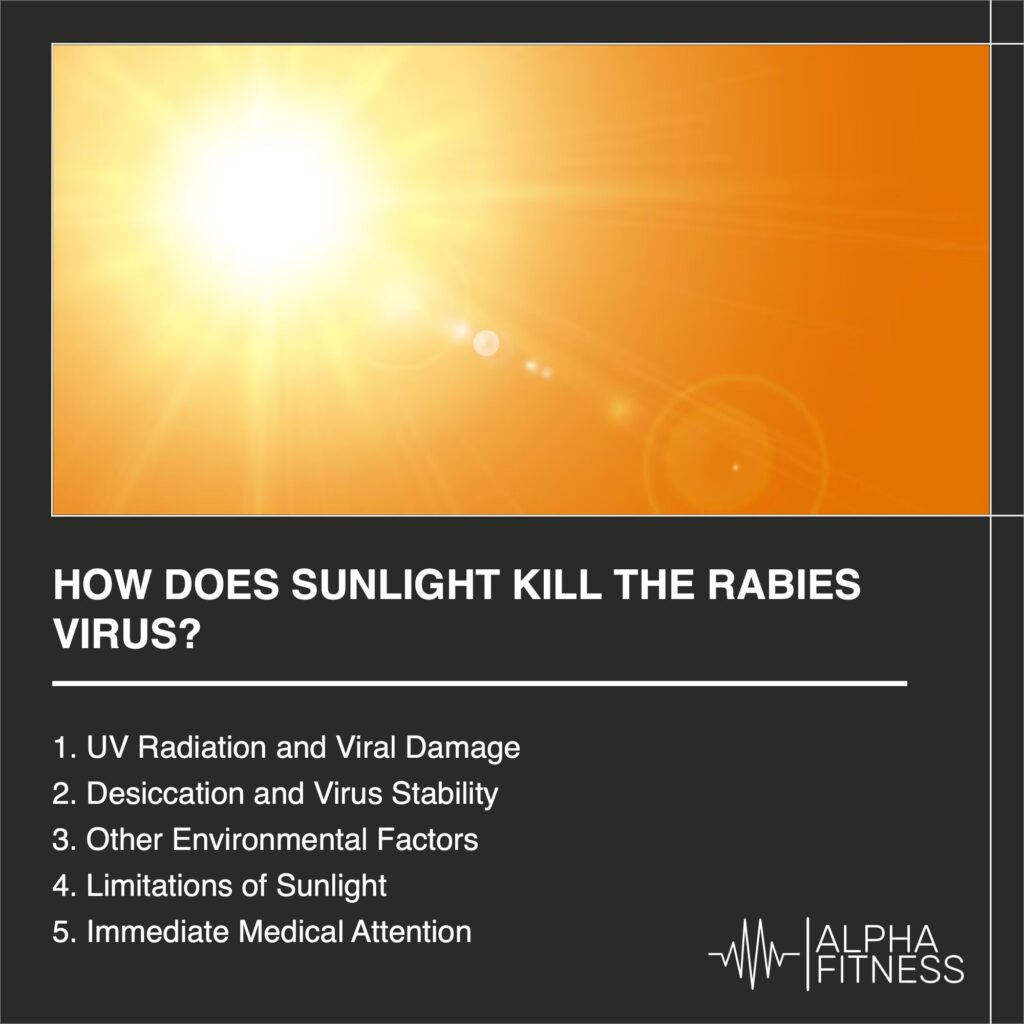
Below is a list of useful links:
- How legumes help cure shingles
- Cutting down on salt reduces the chances of heart failure
- Green, leafy vegetables usually fight dementia
- How quit smoking can goodbye the asthma?
- Tension works as a door for hypertension
Sunlight doesn’t directly “kill” the rabies virus but can help to break it down over time due to the combination of ultraviolet (UV) radiation and desiccation (drying out). Rabies virus is highly sensitive to environmental factors, and while it is not instantly destroyed by sunlight, prolonged exposure can be detrimental to the virus.
Here’s how sunlight and environmental factors can affect the rabies virus:
UV Radiation and Viral Damage: Ultraviolet (UV) radiation from the sun can cause damage to the genetic material of the rabies virus. The rabies virus, like other viruses, contains genetic material in the form of RNA (ribonucleic acid). UV radiation can cause chemical changes in the RNA, including the formation of cross-links and breaks in the RNA strands. These alterations can disrupt the virus’s ability to replicate and infect host cells. However, the extent of damage and the time it takes to render the virus non-infectious can vary depending on factors like UV intensity, exposure duration, and the viral load present.
Desiccation and Virus Stability: The rabies virus is relatively stable in a moist environment, meaning it can persist longer on surfaces and in bodily fluids when they are wet. However, when exposed to sunlight and air, these surfaces can dry out, leading to a loss of moisture. Desiccation can negatively impact the stability of the virus and reduce its ability to remain infectious. This process can take time and is influenced by temperature and humidity levels.
Other Environmental Factors: In addition to UV radiation and desiccation, other environmental factors can also affect the rabies virus’s viability. Temperature, for example, plays a role. The virus tends to be more stable at lower temperatures, so exposure to sunlight in warmer climates may be more effective in inactivating the virus. Conversely, the virus can survive longer in colder and more humid conditions.
Limitations of Sunlight: While sunlight and environmental factors can help reduce the risk of rabies virus transmission through indirect contact (e.g., touching a contaminated surface), it’s crucial to understand that the virus is primarily transmitted through direct contact with the saliva or neural tissue of an infected animal, typically via a bite or scratch. Sunlight and environmental factors may not provide immediate protection in cases of potential exposure through a bite.
Immediate Medical Attention: It’s crucial to emphasize that while sunlight and environmental factors can contribute to reducing the risk of rabies virus transmission through indirect contact (e.g., touching contaminated surfaces), they do not provide immediate protection in cases of potential exposure through a bite or scratch from a potentially rabid animal. The primary mode of rabies transmission is through direct contact with the saliva or neural tissue of an infected animal. In such cases, the virus can enter the body through the wound and reach the central nervous system, leading to rabies.
In summary, while environmental factors like sunlight and desiccation can gradually reduce the viability of the rabies virus, they are not a substitute for immediate medical attention in cases of potential rabies exposure. Prompt medical care is the most effective way to prevent the development of rabies after a potential exposure.




7 thoughts on “How does sunlight kill the rabies virus?”